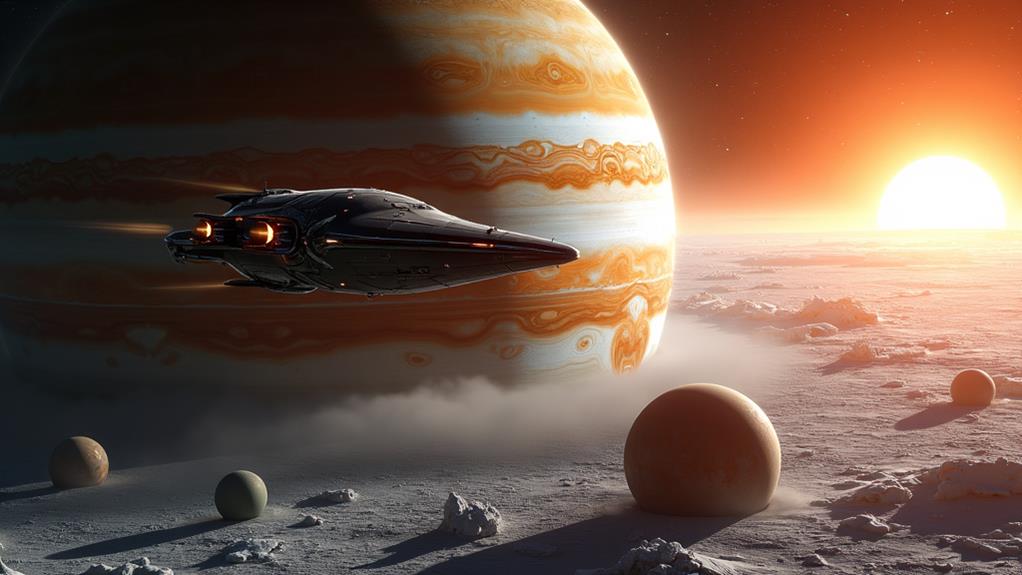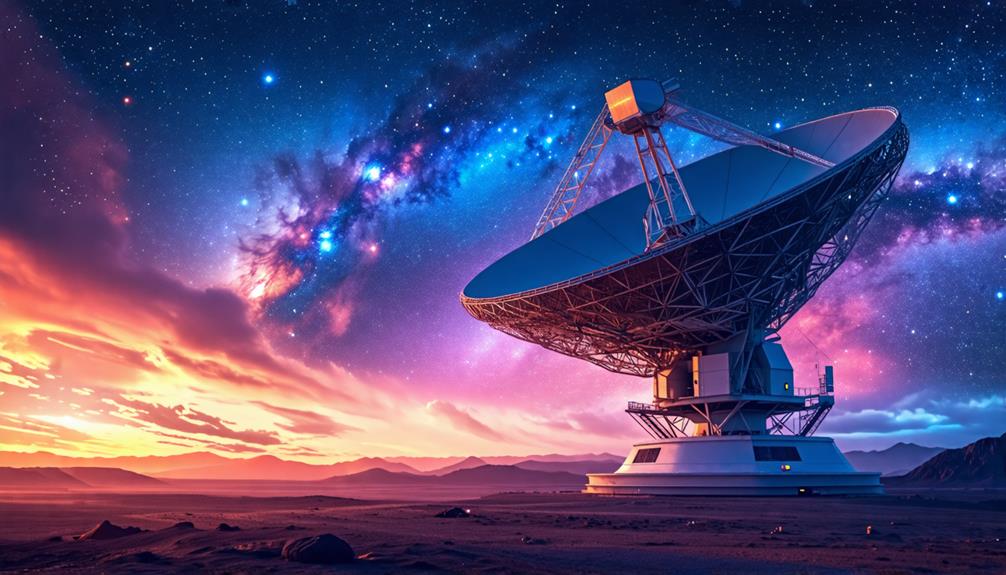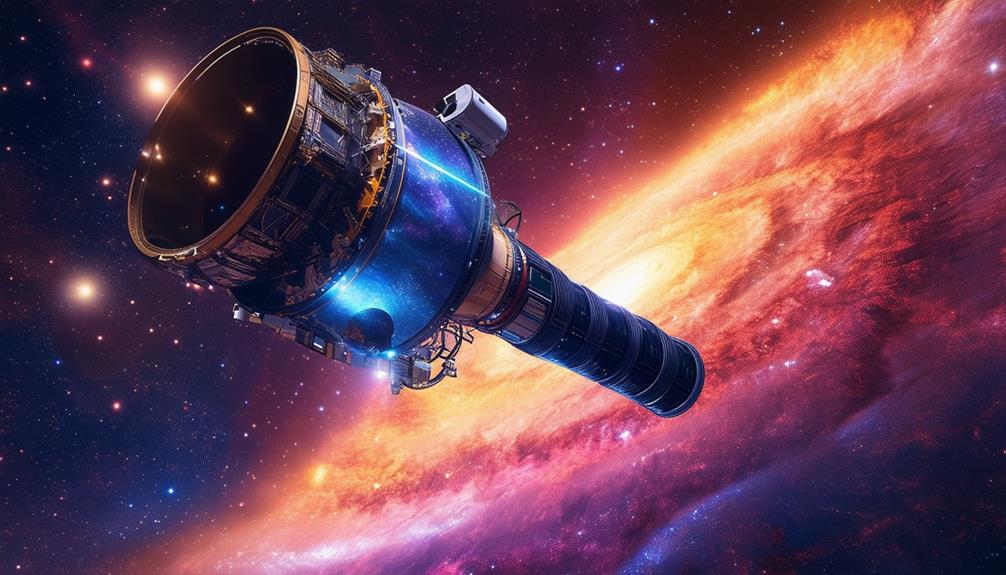The Effects of Space Debris on Satellites and Space Missions
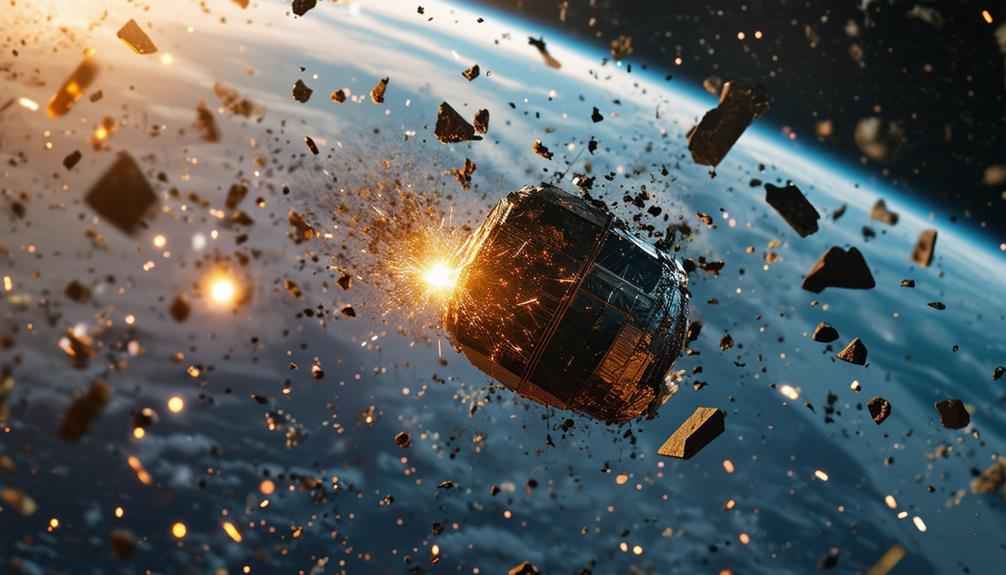
The vastness of space might suggest an infinite expanse, but it's becoming increasingly crowded with debris. These fragments, ranging from tiny paint flecks to defunct satellites, travel at high velocities and pose substantial risks to active satellites and space missions.
Even the smallest fragment can cause significant damage. How do space agencies plan to safeguard our satellites and ensure the viability of future missions? The strategies they are developing could fundamentally change our approach to space exploration and sustainability.
Understanding Space Debris
Understanding space debris involves recognizing it as the accumulation of defunct satellites, rocket fragments, and mission-related objects orbiting Earth. This space junk poses significant risks due to the sheer number and high velocity of objects in orbit. According to the European Space Agency (ESA), over 900,000 pieces of debris ranging from 1 to 10 centimeters are currently circling our planet.
When considering space debris, it's important to understand its impact on active satellites and the International Space Station (ISS). These objects travel at speeds exceeding 28,000 km/h, making collision avoidance a critical concern. Even the smallest piece of debris can cause substantial damage at such high velocities. The North American Aerospace Defense Command (NORAD) tracks over 29,000 larger debris pieces, each with the potential to cause catastrophic consequences, such as fuel explosions or contamination from nuclear-powered satellites.
Space debris includes fragments of all sizes, with more than 128 million pieces smaller than 1 centimeter floating in space. These tiny fragments are particularly perilous for astronauts during spacewalks and for the ISS. While many of these pieces burn up upon re-entering Earth's atmosphere, the increasing amount of space junk underscores the urgent need for effective mitigation strategies.
Causes of Space Debris
The growing problem of space debris poses significant threats to the safety and longevity of space missions. One major source of space debris is defunct satellites that remain in orbit after their operational lifespan, becoming hazardous objects that increase the risk of collisions.
Discarded rocket stages can also explode, creating thousands of fragments that further clutter the orbital environment. Additionally, equipment lost during spacewalks—such as tools and other man-made objects—contributes to the accumulation of space waste.
Anti-satellite weapons tests conducted by countries like the United States, Soviet Union, China, and India have generated substantial debris, breaking satellites into numerous dangerous fragments. High orbits present another challenge, as abandoned objects in these regions are less affected by atmospheric drag and don't naturally re-enter Earth's atmosphere.
Without controlled reentry procedures, these objects remain in orbit indefinitely, exacerbating the debris problem. Collectively, these factors worsen the space debris issue, posing significant risks to current and future space missions.
Consequences for Satellites
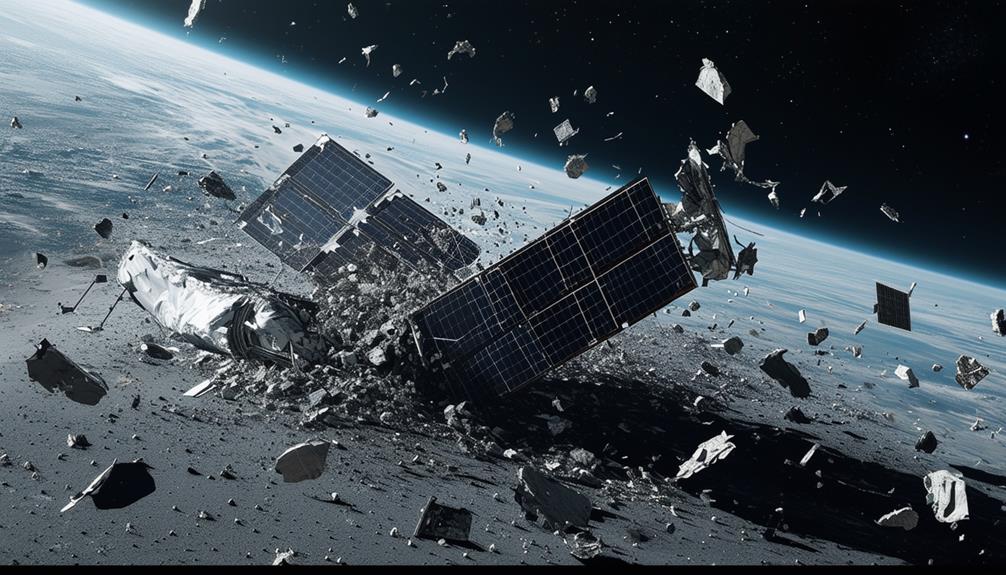
Space debris poses a significant threat to the functionality and safety of operational satellites. Since 1961, over 560 fragmentation incidents have been recorded, making the collision risk with space debris a persistent concern. Satellites and rocket bodies orbiting in low Earth orbit are particularly vulnerable. Though direct collisions with space debris are rare, they can cause serious damage to active satellites, leading to costly repairs or complete loss.
Micrometeorites and solid fuel fragments from space debris also present substantial risks. These tiny particles, despite their size, can inflict considerable damage upon impact. The hazards aren't limited to the satellites themselves; the reentry of satellites with nuclear batteries can potentially lead to contamination on Earth if not managed properly.
While most space debris is destroyed upon reentry, larger fragments can survive and cause damage to satellites. Constant monitoring is required to ensure the safety and functionality of operational satellites.
The implications extend beyond individual satellites, affecting broader space missions. Effective management of these risks is essential for maintaining the integrity of our space infrastructure.
Mitigation Strategies
To combat the growing threat of space debris, several effective mitigation strategies are being implemented. One primary approach involves deorbiting defunct satellites to prevent them from becoming hazardous debris. Enhancing spacecraft design and incorporating self-disposal mechanisms can significantly reduce the likelihood of creating new debris.
Additionally, tracking and monitoring existing space debris are crucial steps in preventing collisions and minimizing risks.
International cooperation is essential in developing and deploying space debris removal technology. This collaboration aims to address the potential for the Kessler Syndrome, where cascading collisions could render space unusable. Stricter regulations and global agreements are necessary to enforce responsible satellite disposal and promote space sustainability initiatives.
Public awareness plays a critical role in this effort. Educating the global community about the risks and consequences of space debris fosters a sense of shared responsibility. Engaging private space companies is also vital, as they can drive innovation in debris removal technology and contribute to sustainable practices.
Future of Space Missions
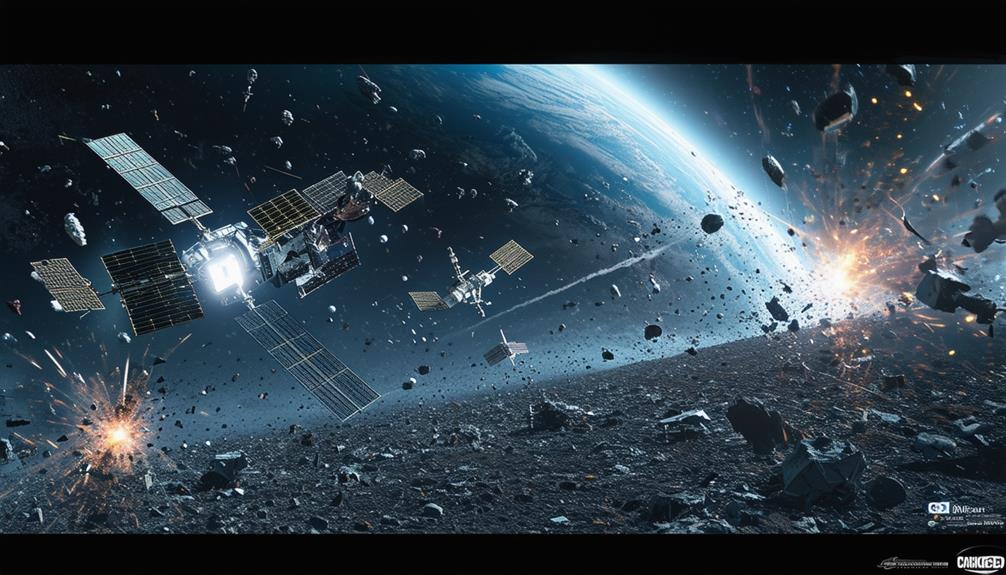
As we look ahead, future space missions must navigate the escalating challenges posed by space debris to ensure their success and safety. The growing amount of debris in space is a significant threat to satellites, which are vital for communications, navigation, and scientific research. To combat this, space agencies and private companies are developing advanced technologies for active debris removal. These technologies are designed to capture and safely deorbit or dispose of defunct satellites and other space junk.
International cooperation is crucial for addressing the global issue of space debris. By working together, countries can establish and enforce guidelines for responsible space operations. This includes ensuring that satellites are disposed of responsibly at the end of their operational lives to minimize the creation of new debris.
Mitigation strategies and sustainable practices are important for the future of space missions. Implementing these measures won't only protect current and future satellites but also preserve the space environment for generations to come.
Without such efforts, the increasing debris could make certain orbits unusable, severely hampering the potential of future missions. Therefore, the joint efforts towards sustainability and international cooperation are necessary for the success of future space endeavors.
Conclusion
Space debris poses a significant threat to satellites and space missions. Monitoring and mitigating this debris is crucial for protecting our investments in space. Strategies such as deorbiting defunct satellites and fostering international cooperation can help reduce these risks. Addressing these challenges is essential for ensuring the safety and functionality of future space missions. By working together, we can sustain and advance our space endeavors.

